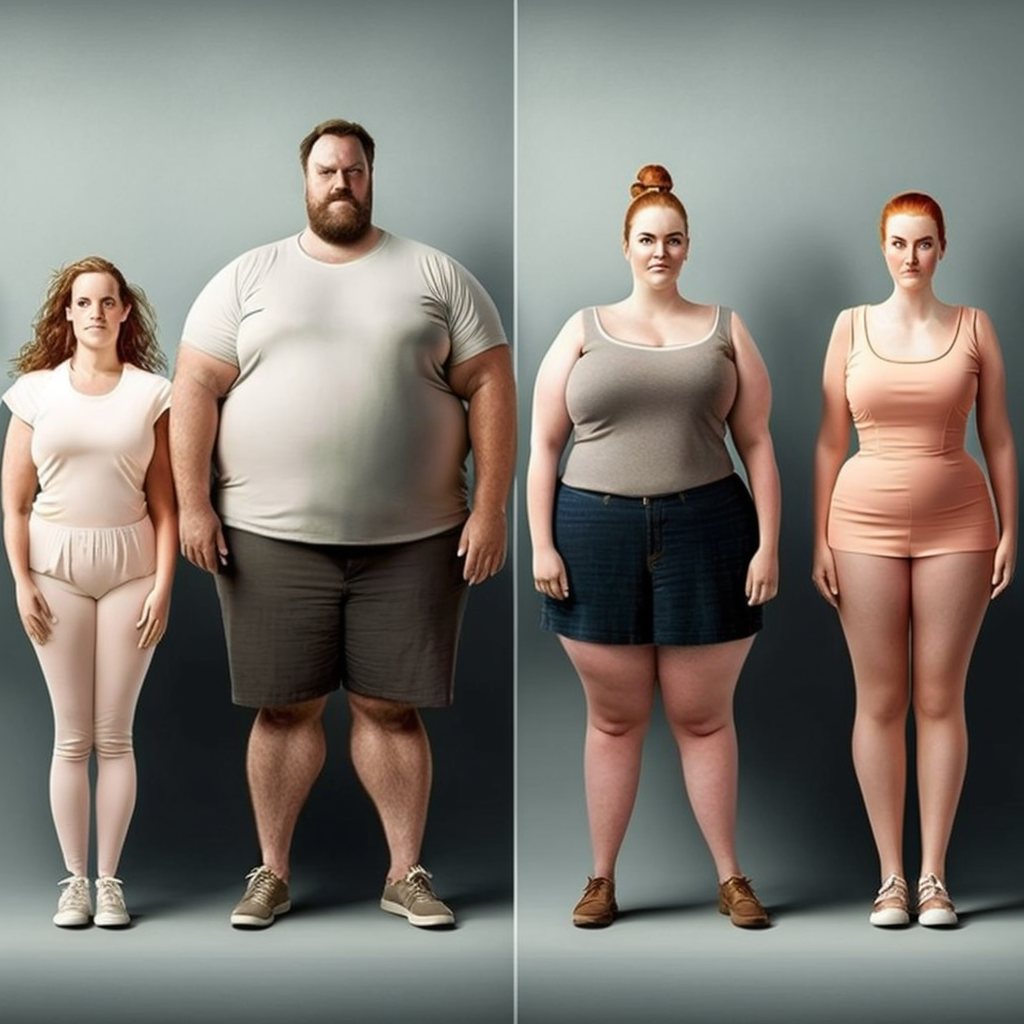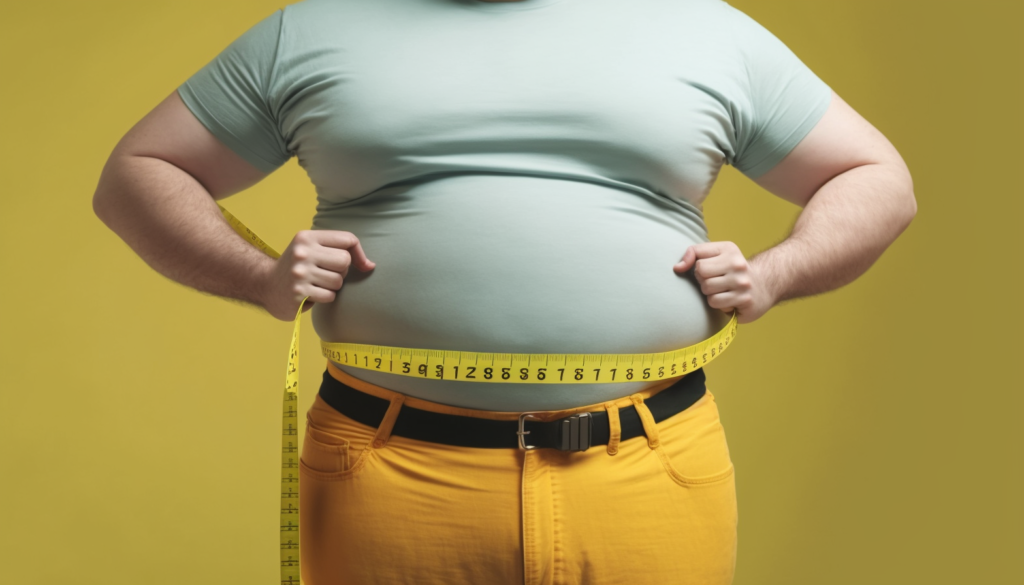The growing interest in weight loss and the challenges people face when trying to lose weight.
Weight loss has been a popular topic for many years and continues to be a common concern for people all over the world. The reasons for this growing interest in weight loss are many and varied, ranging from health concerns, such as reducing the risk of chronic diseases, to aesthetic goals, such as improving one’s physical appearance.
However, despite the growing interest in weight loss, many people still face significant challenges when trying to lose weight. One of the biggest challenges is sticking to a weight loss plan, as it often requires a significant change in eating habits and physical activity levels. People may also struggle with finding the time and motivation to exercise regularly and prepare healthy meals. Additionally, conflicting information about weight loss, such as the latest diets or workout trends, can make it difficult for people to determine what approach is best for them.
Another challenge is overcoming emotional eating, which can lead to overeating and sabotage weight loss efforts. Finally, the weight loss industry is often full of products and programs that make exaggerated claims, making it difficult for people to separate fact from fiction.
Overall, weight loss can be a complex and challenging process, but with the right mindset and approach, it can also be a rewarding and fulfilling journey.
In this post, We’ll be sharing some effective weight loss tips and tricks.
In this post, you’ll learn some of the most effective weight loss tips and tricks to help you achieve your goals. Whether you’re looking to lose a few pounds or make a significant change, these tips will provide you with practical strategies to help you reach your destination. From understanding your body type to setting realistic goals, and from the importance of diet to the benefits of exercise and mindfulness, we’ll cover all the key elements of a successful weight loss plan. So if you’re ready to take control of your weight and improve your health, let’s get started!
Understanding your body type
The different body types and how they affect weight loss.
There are three main body types that can affect weight loss: ectomorph, mesomorph, and endomorph. Understanding your body type can help you tailor your weight loss approach to your individual needs and make your journey more effective.

- Ectomorph: Ectomorphs are naturally thin and have a hard time putting on weight. They have a fast metabolism, which can make weight loss a challenge. For ectomorphs, it’s important to focus on building muscle mass through strength training and eating a high-calorie diet.
- Mesomorph: Mesomorphs have a naturally athletic build and are able to put on muscle and lose fat relatively easily. For mesomorphs, a balanced approach to diet and exercise is usually the most effective for weight loss.
- Endomorph: Endomorphs tend to have a slower metabolism and store fat easily. They may also struggle with overeating and a sedentary lifestyle. For endomorphs, it’s important to focus on a calorie-controlled diet, regular physical activity, and developing healthy habits to support their weight loss journey.
It’s worth noting that most people are a combination of these body types, and everyone’s body reacts differently to diet and exercise. However, understanding your body type can provide a helpful starting point for your weight loss journey and help you make informed decisions about your diet and exercise plan.
The importance of understanding our body type to tailor your weight loss plan.
Understanding our body type is an important aspect of tailoring your weight loss plan because everyone’s body is unique and reacts differently to diet and exercise. By understanding your body type, you can make informed decisions about your diet and exercise plan, which can help you achieve your weight loss goals more effectively.
For example, if you are an ectomorph, you may have a fast metabolism, which can make weight loss a challenge. To overcome this challenge, you may need to focus on building muscle mass through strength training and eating a high-calorie diet. On the other hand, if you are an endomorph, you may tend to store fat easily and have a slower metabolism, so a calorie-controlled diet and regular physical activity may be more effective for you.
Additionally, understanding your body type can help you set realistic goals. For example, if you are naturally thin, you may not be able to lose as much weight as someone who is naturally heavier. However, you may still be able to make significant progress by building muscle mass and improving your overall health.
In conclusion, understanding your body type can provide a valuable starting point for your weight loss journey and help you make informed decisions about your diet and exercise plan. It can also help you set realistic goals and stay motivated as you work towards your desired outcome.
Setting Realistic Goals
why it’s important to set achievable weight loss goals.
Setting achievable weight loss goals is important for several reasons:

- Motivation: Having specific, achievable goals can help you stay motivated and focused on your weight loss journey. When you see progress, you’ll be encouraged to keep going, and when you reach your goals, you’ll feel a sense of accomplishment.
- Realism: Setting realistic goals can prevent you from becoming discouraged. If your goals are too lofty, you may become frustrated when you don’t see immediate results and give up. Setting achievable goals can help you maintain a positive outlook and stay committed to your weight loss journey.
- Focus: Having specific goals can help you focus on what you need to do to reach them. You can develop a plan to achieve your goals, and track your progress along the way.
- Measurable Progress: Achievable goals allow you to measure your progress and see the results of your efforts. This can be a powerful motivator, as you can see the tangible benefits of your hard work.
- Flexibility: Achievable goals allow you to make adjustments along the way. If your goals are too rigid, you may become discouraged if you don’t reach them. With achievable goals, you have the flexibility to make changes as needed to ensure success.
In conclusion, setting achievable weight loss goals is important for staying motivated, staying focused, tracking progress, and maintaining a positive outlook. It’s important to set goals that are challenging but achievable, and to adjust them as needed to ensure success.
Tips for setting and sticking to realistic goals.
Here are some tips for setting and sticking to realistic weight loss goals:
- Be specific: Clearly define what you want to achieve, and set a specific target weight or body fat percentage. This will help you focus on what you need to do to reach your goals.
- Make a plan: Write down a plan for how you will achieve your goals. This can include a healthy eating plan, a workout schedule, and strategies for overcoming obstacles.
- Set short-term goals: In addition to your overall goal, set smaller, short-term goals that are easier to achieve. These smaller goals will give you a sense of accomplishment along the way and keep you motivated.
- Be realistic: Set goals that are challenging but achievable. Remember, weight loss is a journey, not a sprint. Losing 1-2 pounds per week is a healthy and sustainable rate of weight loss.
- Measure progress: Keep track of your progress by regularly measuring your weight, body fat percentage, or other metrics. This will help you see your progress and make adjustments as needed.
- Find accountability: Find someone to hold you accountable, whether it’s a friend, family member, or a weight loss coach. Having someone to report to can help you stay on track and reach your goals.
- Celebrate successes: Celebrate your successes, no matter how small they may be. This can help you stay motivated and focused on your goals.
- Be flexible: Be open to making adjustments to your goals as needed. Weight loss can be a challenging journey, and it’s important to be flexible and adapt to changing circumstances.
In conclusion, setting and sticking to realistic weight loss goals requires a combination of goal-setting, planning, accountability, and flexibility. By following these tips, you can set yourself up for success and achieve your desired outcome.
Importance of Diet
The role of diet in weight loss.
Diet plays a critical role in weight loss. What you eat, how much you eat, and when you eat can all impact your weight. Here are a few key points to keep in mind when considering the role of diet in weight loss:

- Energy balance: To lose weight, you need to create a calorie deficit, meaning you need to burn more calories than you consume. This can be achieved by reducing your calorie intake, increasing your physical activity, or a combination of both.
- Nutrient density: The type of food you eat can also impact your weight. Choosing nutrient-dense foods, such as fruits, vegetables, whole grains, and lean proteins, can help you feel full and satisfied, while also reducing your calorie intake.
- Portion control: Paying attention to portion sizes is an important aspect of weight loss. Consuming large portions of high-calorie foods can quickly add up to a large calorie surplus, making it difficult to lose weight.
- Meal timing: When you eat can also impact your weight. Eating smaller, frequent meals throughout the day can help regulate your hunger and keep your metabolism burning calories.
- Hydration: Staying hydrated is also important for weight loss. Drinking plenty of water can help you feel full and reduce your calorie intake, while also helping your body function optimally.
In conclusion, diet plays a critical role in weight loss. To be successful, it’s important to focus on energy balance, nutrient density, portion control, meal timing, and hydration. By making these dietary changes, you can support your weight loss journey and achieve your desired outcome.
Different types of diets and their impact on weight loss. (e.g. low-carb, low-fat, etc.)
There are many different types of diets that have been developed for weight loss. Some of the most popular include:
- Low-carb diets: Low-carb diets, such as the ketogenic diet, restrict the consumption of carbohydrates and emphasize the consumption of healthy fats and proteins. This type of diet can lead to rapid weight loss, as the body burns fat for fuel instead of carbohydrates.
- Low-fat diets: Low-fat diets aim to reduce the consumption of fats, including saturated and trans fats. This type of diet emphasizes the consumption of whole grains, fruits, and vegetables, and can be an effective way to reduce calorie intake and promote weight loss.
- Intermittent fasting: Intermittent fasting involves alternating periods of fasting and eating. This type of diet can help reduce calorie intake and promote weight loss, while also offering other health benefits such as improved insulin sensitivity and reduced inflammation.
- Plant-based diets: Plant-based diets, such as a vegan or vegetarian diet, focus on consuming foods from plant-based sources, such as fruits, vegetables, whole grains, legumes, and nuts. This type of diet can be effective for weight loss, as it emphasizes nutrient-dense foods and limits calorie-dense foods.
- Meal-replacement diets: Meal-replacement diets, such as the SlimFast diet, involve replacing one or more meals with a formulated shake, bar, or other meal replacement product. This type of diet can be effective for weight loss, as it helps control calorie intake and portion size.
It’s important to keep in mind that each person is unique and may respond differently to different diets. It’s also important to choose a diet that aligns with your personal preferences and lifestyle. A diet that is sustainable for you is the one that you will stick with and reap the benefits from.
In conclusion, there are many different types of diets that can help promote weight loss. By considering your personal preferences and goals, you can choose the diet that is right for you and achieve your desired outcome.
Tips for maintaining a healthy and balanced diet for weight loss.
Here are some tips for maintaining a healthy and balanced diet for weight loss:
- Plan ahead: Planning your meals and snacks in advance can help you avoid unhealthy choices and ensure you have healthy options on hand.
- Focus on nutrient-dense foods: Emphasize nutrient-dense foods, such as fruits, vegetables, whole grains, lean proteins, and healthy fats, to support your weight loss journey.
- Control portion sizes: Paying attention to portion sizes is important for controlling your calorie intake. Use measuring cups or a food scale to ensure you are eating appropriate portions.
- Hydrate: Drinking plenty of water can help you feel full and reduce your calorie intake. Aim for at least 8 cups of water per day.
- Limit high-calorie and processed foods: Foods high in added sugars, saturated and trans fats, and sodium should be limited to support weight loss and overall health.
- Cook at home: Preparing meals at home allows you to control the ingredients and portions, and can be more cost-effective and healthier than eating out.
- Eat mindfully: Pay attention to your hunger and fullness cues, and take time to enjoy your meals. Eating mindfully can help you feel more satisfied with smaller portions.
- Find healthy alternatives: If you have a craving for a high-calorie food, find a healthier alternative that you can enjoy. For example, if you crave ice cream, try a low-fat frozen yogurt or fruit sorbet.
By following these tips, you can maintain a healthy and balanced diet that supports your weight loss journey. Remember, small changes over time can lead to big results!
Exercise and Physical Activity
The benefits of exercise for weight loss.
Exercise is an important component of any weight loss plan, as it helps to burn calories and build muscle, which in turn can boost metabolism and support weight loss. Here are some benefits of exercise for weight loss:

- Increased calorie burn: Exercise burns calories and helps to create a calorie deficit, which is essential for weight loss. The more intense the exercise, the more calories you will burn.
- Building muscle: Exercise, particularly resistance training, helps to build muscle mass. Muscle tissue burns more calories at rest than fat tissue, which can boost your metabolism and help you lose weight more effectively.
- Improved mood and energy levels: Exercise releases endorphins, the feel-good hormones, which can help improve your mood and energy levels, making it easier to stick to your weight loss plan.
- Better sleep: Exercise can help improve sleep quality and quantity, which is important for weight loss as lack of sleep can lead to weight gain.
- Increased satiety: Exercise can help regulate hunger and increase feelings of fullness, which can help reduce overall food intake and support weight loss.
- Better health: Regular exercise can help improve overall health and reduce the risk of chronic diseases such as heart disease, diabetes, and some cancers, which can lead to better long-term health and weight management.
It’s important to remember that while exercise is important for weight loss, it’s not the only factor. A combination of a healthy diet and regular exercise is the most effective way to achieve and maintain weight loss in the long term.
Tips for incorporating physical activity into a busy schedule.
Incorporating physical activity into a busy schedule can be a challenge, but it’s important for weight loss and overall health. Here are some tips for making it happen:
- Make it a priority: Schedule physical activity into your day just as you would any other important task. Treat it as a non-negotiable appointment that you don’t miss.
- Find activities you enjoy: Choose physical activities that you enjoy and that are easily accessible, such as walking, cycling, or swimming. This will make it easier to stick to your routine.
- Get up earlier: If your schedule is packed, try waking up a little earlier to fit in a workout before your day starts. This can also help to boost your energy levels for the rest of the day.
- Exercise during lunch breaks: If you have a long work day, try to fit in a quick workout during your lunch break. You can go for a walk, do some stretching, or even hit the gym for a quick workout.
- Incorporate physical activity into your daily routines: Try to find ways to incorporate physical activity into your daily routines, such as taking the stairs instead of the elevator or going for a walk during phone calls.
- Exercise with friends or family: Exercise is more fun and motivating when you do it with others. Find a workout buddy or join a class to stay motivated.
- Try short, high-intensity workouts: If you’re short on time, try short, high-intensity workouts that are highly effective in burning calories and building muscle, such as HIIT (High-Intensity Interval Training) or circuit training.
Remember, the key is to be consistent and make physical activity a regular part of your routine, even if it means making small changes at first. Over time, these small changes can add up to big results.
Types of exercise and their impact on weight loss. (e.g. cardio, strength training, etc.)
Different types of exercise have different impacts on weight loss and overall health. Here’s a look at some of the most popular forms of exercise:
- Cardiovascular (Cardio) Exercise: Cardio exercise, such as running, cycling, and swimming, burns a lot of calories and helps to increase your heart rate. This type of exercise is great for improving cardiovascular health, reducing the risk of chronic disease, and promoting weight loss.
- Strength Training: Strength training, such as weightlifting and bodyweight exercises, helps to build muscle mass, increase metabolism, and burn calories. This type of exercise is particularly effective for targeting stubborn areas of fat and maintaining weight loss.
- High-Intensity Interval Training (HIIT): HIIT is a form of exercise that involves short bursts of high-intensity activity followed by periods of rest. This type of exercise is highly effective for burning calories, boosting metabolism, and improving cardiovascular health.
- Yoga: Yoga is a low-impact form of exercise that promotes physical, mental, and spiritual well-being. Yoga helps to increase flexibility, balance, and muscle strength, and can also promote weight loss.
- Pilates: Pilates is a low-impact form of exercise that focuses on building strength, flexibility, and balance. Pilates can help to tone muscles, improve posture, and promote weight loss.
It’s important to choose an exercise program that you enjoy and that fits into your lifestyle, as consistency is key to achieving and maintaining weight loss results. A combination of different types of exercise, such as cardio, strength training, and yoga, can be effective for promoting weight loss and overall health.
Mindful Eating
The concept of mindful eating and its impact on weight loss.
Mindful eating is a practice that involves paying close attention to your physical and emotional experiences while eating. This practice can help to increase awareness of hunger and fullness cues, reduce overeating and emotional eating, and promote weight loss.

The concept of mindful eating is based on the idea that we often eat without being fully present or aware of what we are doing. We may eat while distracted by work, television, or other activities, or eat out of habit or emotional triggers, such as stress or boredom. This can lead to overeating and poor food choices.
With mindful eating, you are encouraged to slow down, savor each bite, and pay attention to the sensations of hunger and fullness. By being more mindful and intentional about your eating habits, you can reduce mindless eating and make healthier food choices that support your weight loss goals.
Studies have shown that mindful eating can have a positive impact on weight loss and overall health. People who practice mindful eating tend to have a better understanding of their eating habits and are more likely to make healthy food choices. Additionally, mindful eating can reduce stress, improve digestion, and increase overall satisfaction with food.
By incorporating mindful eating into your weight loss plan, you can develop a healthier relationship with food and improve your overall health and well-being.
Tips for practicing mindful eating and avoiding overeating.
Here are some tips for practicing mindful eating and avoiding overeating:
- Eat slowly: Take your time to savor each bite, chew your food thoroughly, and put your fork down between bites.
- Pay attention to hunger and fullness cues: Listen to your body to determine when you are hungry and when you are full. Eat when you are hungry and stop when you are satisfied.
- Avoid distractions: Turn off your phone, TV, and computer and focus solely on your meal. This will help you to be more mindful of what you are eating and how much you are eating.
- Practice gratitude: Take a moment to reflect on the food you are eating and how it nourishes your body. Express gratitude for the food and the people who made it possible.
- Use smaller plates: Using smaller plates can help you to eat smaller portions, which can prevent overeating.
- Be mindful of your emotions: Be mindful of your emotional state when you are eating. Ask yourself if you are really hungry or if you are eating because you are stressed, bored, or emotional.
- Plan ahead: Plan your meals and snacks in advance so that you have healthy options available. Avoid keeping junk food in the house.
- Avoid eating in front of the TV: This can be a trigger for overeating, as you are more likely to eat mindlessly while distracted.
By incorporating these tips into your daily routine, you can practice mindful eating and avoid overeating, which can support your weight loss goals and improve your overall health.
Staying Motivated
The challenges of sticking to a weight loss plan.
Sticking to a weight loss plan can be challenging for many reasons. Some common challenges include:

- Lack of motivation: Losing weight can be a slow process and it’s easy to lose motivation when progress is slow.
- Time constraints: Finding the time to prepare healthy meals, exercise, and stick to your weight loss plan can be difficult when you have a busy schedule.
- Social pressure: Eating healthy and sticking to your weight loss plan can be difficult when socializing with friends and family who may not share your same goals.
- Food cravings: Overcoming food cravings for unhealthy, high-calorie foods can be a challenge for many people trying to lose weight.
- Boredom with healthy foods: Eating the same healthy foods day after day can become boring, making it difficult to stick to your weight loss plan.
- Lack of support: Losing weight can be a lonely journey, and without support from family, friends, or a support group, it can be challenging to stick to your plan.
- Setbacks and slip-ups: Despite your best efforts, setbacks and slip-ups are a normal part of the weight loss journey. It’s important to avoid getting discouraged and to stay motivated.
By recognizing these challenges and developing strategies to overcome them, you can increase your chances of sticking to your weight loss plan and achieving your goals.
Tips for staying motivated and avoiding boredom.
Staying motivated and avoiding boredom during your weight loss journey can be a challenge, but there are several strategies that can help:
- Set realistic and achievable goals: Set small, achievable goals that you can reach along the way to keep yourself motivated.
- Keep track of your progress: Keeping a record of your progress, whether it’s by tracking your food intake, taking progress photos, or tracking your weight, can help you stay motivated and see the progress you’re making.
- Find a workout buddy: Working out with a friend can help you stay motivated, have fun, and hold each other accountable.
- Mix up your exercise routine: Doing the same exercise routine every day can become boring. Try new activities, like dance classes or hiking, to keep things interesting and challenging.
- Experiment with new healthy foods: Eating the same foods every day can become boring. Try new healthy recipes and ingredients to keep things interesting and add variety to your diet.
- Reward yourself: Set up a reward system for when you reach your goals. This can be something as simple as a treat or a new workout outfit, or as big as a vacation.
- Join a support group: Joining a support group can help you stay motivated and on track, as well as provide you with a network of people who are facing the same challenges and can offer support and advice.
Remember, weight loss is a journey and it’s important to be kind to yourself, celebrate your progress, and avoid comparing yourself to others. By following these tips and staying motivated, you can achieve your weight loss goals and lead a healthier, happier life.
The key points from the post.
The key points from the post on weight loss tips and tricks include:
- Understanding your body type is important in tailoring a weight loss plan that works best for you.
- Setting achievable weight loss goals is crucial in maintaining motivation and avoiding disappointment.
- A healthy and balanced diet plays a crucial role in weight loss. Experimenting with different types of diets and incorporating a variety of healthy foods can help maintain interest and avoid boredom.
- Exercise is an important aspect of weight loss and can help burn calories and build muscle. Incorporating physical activity into a busy schedule and trying different types of exercises can help keep things interesting.
- Practicing mindful eating can help you become more aware of your food choices and avoid overeating.
- Sticking to a weight loss plan can be challenging, but staying motivated and avoiding boredom can be achieved through goal-setting, progress tracking, workout buddy, variety in exercise and diet, rewarding yourself, and joining a support group.
- The post provides tips and advice to help you achieve your weight loss goals and lead a healthier, happier life.

